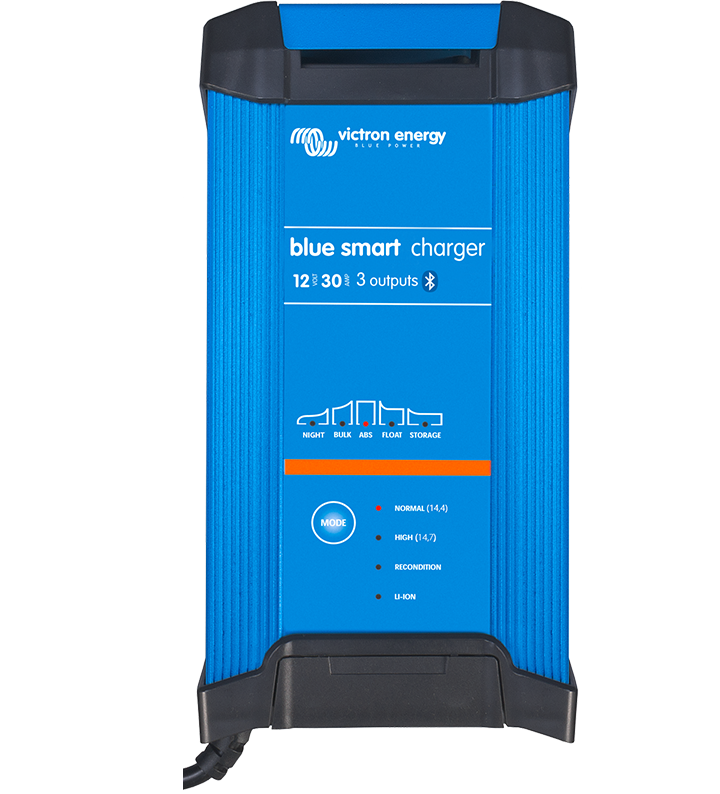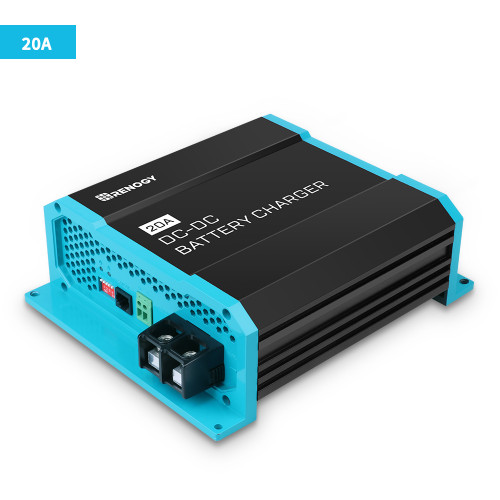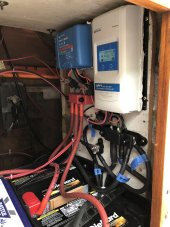Hi
I'm new here and having a question/problem
No one could give me the solution till now
This concerns my sailboat electricity
I have
4 cells 12v 200amp Aliexpress batteries - living / electronic / fridge

 fr.aliexpress.com
fr.aliexpress.com
1 Daly 4s 12v 250amp BT BMS

 fr.aliexpress.com
fr.aliexpress.com
1 Optima 76amp battery - engine
 www.optimabatteries.com
www.optimabatteries.com
1 Victron 12/200/3 - 30amp smart charger

 www.victronenergy.com
www.victronenergy.com
On my Yanmar engine I have a 45amp alternator
The Smart charger can charge my Optima and LFP battery
But, I do not know wich DC/DC charger to buy to charge via the alternator
I'm thinking to
Renogy DC/DC - 20amp

 www.renogy.com
www.renogy.com
Victron Smart DC/DC Orion 20amp
 www.victronenergy.com
www.victronenergy.com
Heeeeeeeeeeeeeeeeeeeeeeeeeeeeelp
Thanks for all
Camille
Bruxelles - Belgium
I'm new here and having a question/problem
No one could give me the solution till now
This concerns my sailboat electricity
I have
4 cells 12v 200amp Aliexpress batteries - living / electronic / fridge

1200.0US $ |Lot De 4 Batteries Lifepo4 De Qualité A, 3,2 V, 200ah, Rechargeables, Cellules À Code Qr, 12v, 24v, 48v, Pas De 280ah, Pour Camping-car, Solaire, Marine, Eu, Us, Sans Taxe, Nouveauté 2021 - Batteries Rechargeables - AliExpress
Achetez malin, vivez mieux! Aliexpress.com
1 Daly 4s 12v 250amp BT BMS

179.72US $ 20% de réduction|BMS intelligent 4s 200A avec Bluetooth pour batterie au lithium, outil de stockage d'énergie solaire avec application UART, 250 LifePO4 de 12 V, livraison partout en Pologne | AliExpress
Achetez malin, vivez mieux! Aliexpress.com
1 Optima 76amp battery - engine
YELLOWTOP® D31A
The YELLOWTOP® D31A is a high-performance AGM battery designed to deliver a strong burst of ignition power for a reliable start-up. Discover YELLOWTOP® today!
1 Victron 12/200/3 - 30amp smart charger

Blue Smart IP22 Charger - Victron Energy
The Blue Smart IP22 Charger is the new professional battery charger with built-in bluetooth. Find a Victron Energy dealer near you.
On my Yanmar engine I have a 45amp alternator
The Smart charger can charge my Optima and LFP battery
But, I do not know wich DC/DC charger to buy to charge via the alternator
I'm thinking to
Renogy DC/DC - 20amp

12V 20A DC to DC On-Board Battery Charger
The best 12v battery charger. Free shipping. The DC-DC Battery Chargers are the most effective method to charge your home batteries from the starter battery
 www.renogy.com
www.renogy.com
Victron Smart DC/DC Orion 20amp
Orion-Tr DC-DC Converters Isolated - Victron Energy
Provide a stable DC output voltage using the, easy to install, Orion DC-DC Inverter from Victron Energy. Find a dealer near you.
Heeeeeeeeeeeeeeeeeeeeeeeeeeeeelp
Thanks for all
Camille
Bruxelles - Belgium




